AP Bio Unit 5 Metabolism and Digestion
1/51
Earn XP
Name | Mastery | Learn | Test | Matching | Spaced |
|---|
No study sessions yet.
52 Terms
Which of the following is an example of potential rather than kinetic energy?
light flashes emitted by a firefly
a molecule of glucose
a crawling beetle foraging for food
water rushing over Niagara Falls
a molecule of glucose
Most cells cannot harness heat to perform work because _____.
heat must remain constant during work
heat can never be used to do work
heat is not a form of energy
temperature is usually uniform throughout a cell
temperature is usually uniform throughout a cell
Which of the following involves a decrease in entropy?
depolymerization reactions
condensation reactions
reactions that separate monomers
hydrolysis reactions
condensation reactions
For living organisms, which of the following is an important consequence of the first law of thermodynamics?
Organisms grow by converting energy into organic matter.
The energy content of an organism is constant.
The entropy of an organism decreases with time as the organism grows in complexity.
The organism ultimately must obtain all of the necessary energy for life from its environment.
The organism ultimately must obtain all of the necessary energy for life from its environment.
The mathematical expression for the change in free energy of a system is ΔG =ΔH - TΔS. Which of the following is (are) correct?
ΔS is the change in enthalpy, a measure of randomness.
ΔG is the change in free energy.
ΔH is the change in entropy, the energy available to do work.
T is the temperature in degrees Celsius.
ΔG is the change in free energy.
Which of the following is true for all exergonic reactions?
A net input of energy from the surroundings is required for the reactions to proceed.
The reaction goes only in a forward direction: all reactants will be converted to products, but no products will be converted to reactants.
The products have more total energy than the reactants.
The reaction proceeds with a net release of free energy.
The reaction proceeds with a net release of free energy.
A chemical reaction that has a positive ΔG is best described as _____.
exergonic
enthalpic
spontaneous
endergonic
endergonic
Choose the pair of terms that correctly completes this sentence: Catabolism is to anabolism as _____ is to _____.
exergonic; endergonic
exergonic; spontaneous
free energy; entropy
work; energy
exergonic; endergonic
When ATP releases some energy, it also releases inorganic phosphate. What happens to the inorganic phosphate in the cell?
It may be used to form a phosphorylated intermediate.
It is used only to regenerate more ATP.
It enters the nucleus and affects gene expression.
It is secreted as waste.
It may be used to form a phosphorylated intermediate.
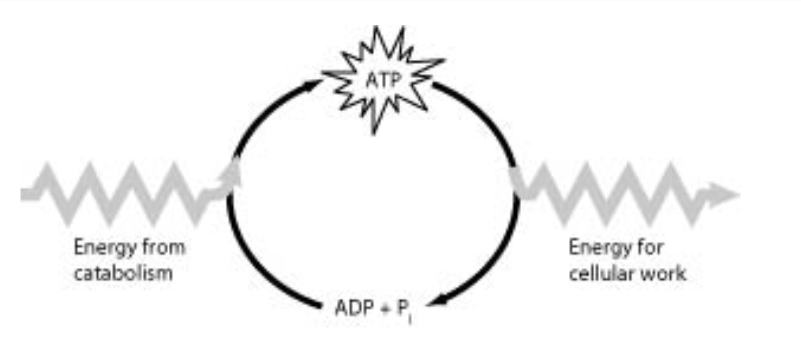
How do cells use the ATP cycle shown in the figure?
Cells use the cycle to recycle energy released by ATP hydrolysis.
Cells use the cycle to recycle ADP and phosphate.
Cells use the cycle to recycle ADP, phosphate, and the energy released by ATP hydrolysis.
Cells use the cycle primarily to generate heat.
Cells use the cycle to recycle ADP and phosphate.
Which of the following is true when comparing an uncatalyzed reaction to the same reaction with a catalyst?
The catalyzed reaction will be slower.
The catalyzed reaction will consume all of the catalyst.
The catalyzed reaction will have higher activation energy.
The catalyzed reaction will have the same ΔG.
The catalyzed reaction will have the same ΔG.
The lock-and-key analogy for enzymes applies to the specificity of enzymes _____.
as they form their tertiary and quaternary structure
interacting with ions
binding to their substrate
interacting with water
binding to their substrate
Reactants capable of interacting to form products in a chemical reaction must first overcome a thermodynamic barrier known as the reaction's _____.
free-energy content
activation energy
equilibrium point
entropy
activation energy
The active site of an enzyme is the region that _____.
binds allosteric regulators of the enzyme
binds noncompetitive inhibitors of the enzyme
is involved in the catalytic reaction of the enzyme
is inhibited by the presence of a coenzyme or a cofactor
is involved in the catalytic reaction of the enzyme
According to the induced fit hypothesis of enzyme catalysis, _____.
some enzymes change their structure when activators bind to the enzyme
the binding of the substrate changes the shape of the enzyme's active site
the binding of the substrate depends on the shape of the active site
the active site creates a microenvironment ideal for the reaction
the binding of the substrate changes the shape of the enzyme's active site
Zinc, an essential trace element for most organisms, is present in the active site of the enzyme carboxypeptidase. The zinc most likely functions as _____.
an allosteric activator of the enzyme
a noncompetitive inhibitor of the enzyme
a cofactor necessary for enzyme activity
a coenzyme derived from a vitamin
a cofactor necessary for enzyme activity
You collect data on the effect of pH on the function of the enzyme catalase in human cells. Which of the following graphs would you expect?
You collect data on the effect of pH on the function of the enzyme catalase in human cells. Which of the following graphs would you expect?
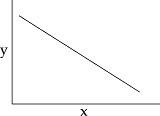 |
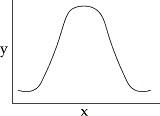 |
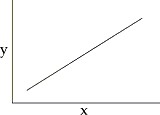 |
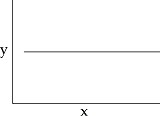 |

Allosteric enzyme regulation is usually associated with _____.
an enzyme with more than one subunit
feedback inhibition
activating activity
the need for cofactors
an enzyme with more than one subunit
Which of the following is an example of cooperativity?
a molecule binding at one unit of a tetramer, allowing faster binding at each of the other three
the binding of an end product of a metabolic pathway to the first enzyme that acts in the pathway
binding of an ATP molecule along with one of the substrate molecules in an active site
one enzyme in a metabolic pathway passing its product to act as a substrate for the next enzyme in the pathway
a molecule binding at one unit of a tetramer, allowing faster binding at each of the other three
Protein kinases are enzymes that transfer the terminal phosphate from ATP to an amino acid residue on the target protein. Many are located on the plasma membrane as integral membrane proteins or peripheral membrane proteins. What purpose may be served by their plasma membrane localization?
Membrane localization lowers the activation energy of the phosphorylation reaction.
They flip back and forth across the membrane to access target proteins on either side.
ATP is more abundant near the plasma membrane.
They can more readily encounter and phosphorylate other membrane proteins.
They can more readily encounter and phosphorylate other membrane proteins.
As the size of some animals has evolved to greater sizes, the effectiveness of their adaptations that promote exchanges with the environment have also increased. For example, in many larger organisms, evolution has favored lungs and a digestive tract with _____.
more branching or folds
increased thickness
larger cells
decreased blood supply
more branching or folds
All animals, whether large or small, have _____.
most of their cells in contact with an aqueous medium
a body surface covered with hair to keep them warm
an external body surface that is dry
a basic body plan that resembles a two-layered sac
most of their cells in contact with an aqueous medium
Which of the following is a true statement about body size and physiology?
The rate at which an animal uses nutrients and produces waste products is independent of its volume.
Small and large animals face different physiological challenges because an animal's body mass increases cubically while its surface area increases as a squared function.
The amount of food and oxygen an animal requires and the amount of heat and waste it produces are inversely proportional to its mass.
The wastes produced by an animal double as its volume doubles and triple as its surface area triples.
Small and large animals face different physiological challenges because an animal's body mass increases cubically while its surface area increases as a squared function.
The body's automatic tendency to maintain a constant and optimal internal environment is termed _____.
balanced equilibrium
homeostasis
physiological chance
static equilibrium
homeostasis
Sweating allows a person to lose heat through the process of _____.
radiation
convection
evaporation
conduction
evaporation
A woman standing and watching the stars on a cool, calm night will lose most of her body heat by _____.
conduction
radiation
convection
evaporation
radiation
Certain nutrients are considered "essential" in the diets of some animals because _____.
only certain foods contain them
the nutrients are necessary coenzymes
only those animals use those nutrients
these animals are not able to synthesize these nutrients
these animals are not able to synthesize these nutrients
Folic acid supplements have become especially important for pregnant women because _____.
folic acid deprivation is associated with neural tube abnormalities in a fetus
folic acid deprivation is a cause of heart abnormalities in a newborn
folic acid supplies vitamins that only pregnant women can use
the fetus makes high levels of folic acid
folic acid deprivation is associated with neural tube abnormalities in a fetus
What is the importance of consuming an adequate amount of proteins in the diet?
They are most commonly used to meet energy demands of cells.
They are used as cofactors for metabolic reactions and are required in minute quantities.
Proteins are necessary to produce urea and other important metabolites.
Proteins serve a variety of functions, and the body does not store excess quantities of protein.
Proteins serve a variety of functions, and the body does not store excess quantities of protein.
Which of the following animals is correctly paired with its feeding mechanism?
clam – substrate feeder
baleen whale – fluid feeder
snake – bulk feeder
aphid – suspension feeder
snake – bulk feeder
Because the foods eaten by animals are often composed largely of macromolecules, animals need to have mechanisms for _____.
enzymatic hydrolysis
dehydration synthesis
demineralization
regurgitation
enzymatic hydrolysis
Which of the following organs is correctly paired with its function?
small intestine – starch digestion
large intestine – bile production
stomach – protein digestion
pancreas – starch digestion
stomach – protein digestion
Historically inaccurate diagnosis of acid reflux disorders and gastric ulcers has been improved by _____.
pH monitoring
screening for H. pylori infections
sonography
X-ray technology
screening for H. pylori infections
Helicobacter pylori is a bacterial organism that causes ulcers and digestive disturbances. How might they survive the acid pH of the stomach?
They burrow under the mucus layer that covers the stomach epithelium.
They take over the parietal cells.
They secrete buffers to neutralize acid.
They release chemicals that decrease acid production in the stomach.
They burrow under the mucus layer that covers the stomach epithelium.
Digestive secretions with a pH of 2 are characteristic of the _____.
stomach
liver
small intestine
pancreas
stomach
An enlarged cecum is typical of _____.
tubeworms that digest via symbionts
carnivorous animals
humans and other primates
rabbits, horses, and herbivorous bears
rabbits, horses, and herbivorous bears
If you found a vertebrate skull in the woods and the teeth were sharp and scissor-like, what type of food would you expect this animal to eat?
blood
flesh of another animal
nectar
grass
flesh of another animal
If there is a strong genetic link for type II diabetes mellitus in your family, how might you minimize your risk of developing the disorder?
take oral insulin daily
maintain a healthy weight, eat a balanced direct, and exercise
eat complex carbohydrates like starch instead of sweets
monitor your blood glucose levels daily
maintain a healthy weight, eat a balanced direct, and exercise
Select the correct statement about chemical energy, a term used by biologists to refer to potential energy available for release in a chemical reaction.
When a glucose molecule is catabolized to CO2 and H2O, chemical energy is lost.
A photosynthetic cell within a plant leaf produces chemical energy, stored within glucose molecules.
Light energy is converted to chemical energy during photosynthesis.
Light energy is converted to chemical energy during photosynthesis.
What is the free energy change (ΔG) of the hydrolysis of ATP to ADP?
The free-energy change (ΔG) of the hydrolysis of ATP to ADP and Pi may vary considerably with variations in pH, temperature, atmospheric pressure, and concentrations of reactants and products.
The free-energy change (ΔG) of the hydrolysis of ATP to ADP and Pi is approximately -7.3 kcal/mole, but it varies from species to species.
The free-energy change (ΔG) of the hydrolysis of ATP to ADP and Pi is constant at -7.3 kcal/mole.
The free-energy change (ΔG) of the hydrolysis of ATP to ADP and Pi may vary considerably with variations in pH, temperature, atmospheric pressure, and concentrations of reactants and products.
Which of the following statements about the role of ATP in cell metabolism is true?
The free energy released by ATP hydrolysis has a much more negative ΔG value than the hydrolysis of phosphate groups from other phosphorylated molecules.
The phosphate bonds of ATP are unusually strong bonds.
The energy from the hydrolysis of ATP may be directly coupled to endergonic processes by the transfer of the phosphate group to another molecule.
The energy from the hydrolysis of ATP may be directly coupled to endergonic processes by the transfer of the phosphate group to another molecule.
How does an enzyme increase the rate of the chemical reaction it catalyzes?
An enzyme’s active site binds only the reactants, and not the products of a reaction, pushing the equilibrium for the reaction far to the right.
An enzyme reduces the free energy of activation (EA) of the reaction it catalyzes.
An enzyme reduces the free-energy change (ΔG) of the reaction it catalyzes.
An enzyme reduces the free energy of activation (EA) of the reaction it catalyzes.
Which statement about the binding of enzymes and substrates is correct?
Substrate molecules fit into the active site of an enzyme like a key fits into a lock.
Substrate molecules bind to the active site of the enzyme only by weak bonds, such as hydrogen bonds or hydrophobic attraction.
When substrate molecules bind to the active site of the enzyme, the enzyme undergoes a slight change in shape.
When substrate molecules bind to the active site of the enzyme, the enzyme undergoes a slight change in shape.
Select the correct statement describing feedback control in animals.
Positive feedback loops contribute to homeostasis.
Ectotherms are regulators with respect to temperature.
An animal may be a regulator for one environmental variable but a conformer for another.
An animal may be a regulator for one environmental variable but a conformer for another.
How do endotherms and ectotherms differ?
Endotherms and ectotherms differ in the means by which they regulate their body temperature.
Endotherms are warm-blooded and ectotherms are cold-blooded.
Endotherms are regulators and ectotherms are conformers.
Endotherms and ectotherms differ in the means by which they regulate their body temperature.
Which statement about endotherms and ectotherms is correct?
Ectotherms are more abundant and diverse than endotherms.
Endothermy is a more successful strategy for thermoregulation than ectothermy.
Ectotherms are more primitive than endotherms.
Ectotherms are more abundant and diverse than endotherms.
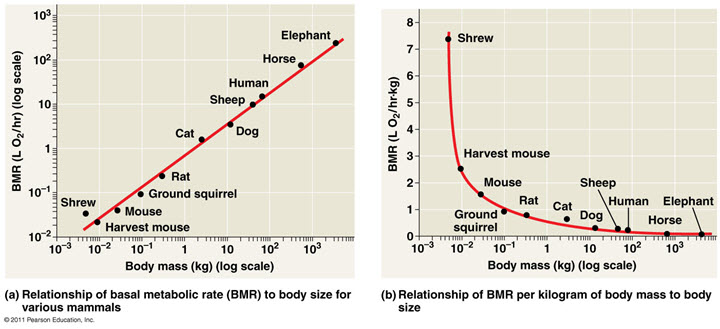
Look at the graphs and choose the correct statement describing the relationship between BMR (basal metabolic rate) and body mass of mammals. (Look carefully at the quantity being displayed on the y-axis of each figure.)
BMR is roughly proportional to body mass squared.
Small mammals have lower BMR, but use more calories per kilogram than large mammals.
Large mammals have lower basal metabolic rates than small mammals.
Small mammals have lower BMR, but use more calories per kilogram than large mammals.
Select the correct statement about essential nutrients.
Essential nutrients must be obtained from diet.
All animals require an identical set of essential nutrients.
Due to their biochemical sophistication, humans have to ingest fewer essential nutrients than do other animals.
Essential nutrients must be obtained from diet.
Bacteria in the human gut are which of the following?
all pathogens
both pathogens and mutualists
all mutualists
both pathogens and mutualists
Identify the roles played by human gut bacteria.
Human gut bacteria synthesize all essential vitamins required by humans.
Ulcers are caused by the acid-tolerant bacterium Helicobacter pylori.
The human appendix houses mutualistic bacteria that digest cellulose.
Ulcers are caused by the acid-tolerant bacterium Helicobacter pylori.
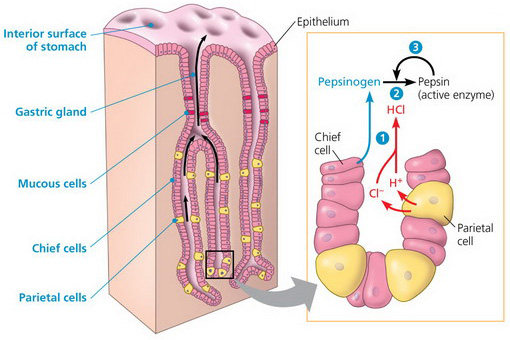
Consider the interior surface of the human stomach and its secretions, shown in the figure. Why doesn’t gastric juice, composed of hydrochloric acid and a protease called pepsin, digest the cells that line the stomach?
The stomach lining secretes mucus, a mixture of glycoproteins, cells, salts, and water.
Digestion doesn’t begin until the small intestine.
Chief cells release pepsin in an inactive form. HCl in the stomach converts pepsin to an active form of the enzyme called pepsinogen by clipping off a small portion of the molecule to expose its active site.
The stomach lining secretes mucus, a mixture of glycoproteins, cells, salts, and water.
Many people have a tendency to gorge on rich, fatty foods. How could such a preference have evolved?
Most people find fatty foods tasty and satisfying.
Fatty foods are very rich in calories and consuming them is an efficient way to gain weight.
In ancestral hunter-gatherer communities, individuals with a tendency to gorge on such foods when available would have had a selective advantage.
In ancestral hunter-gatherer communities, individuals with a tendency to gorge on such foods when available would have had a selective advantage.